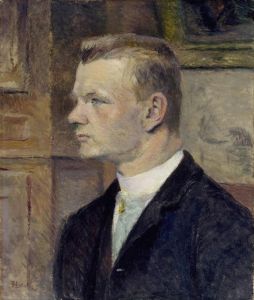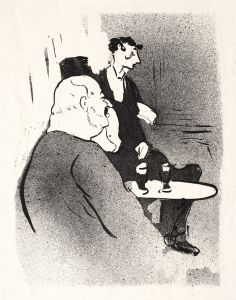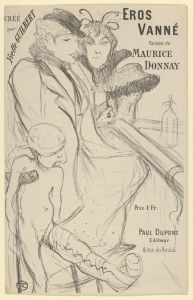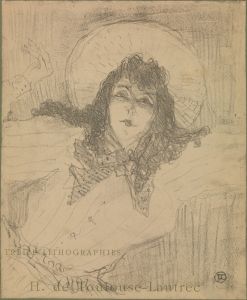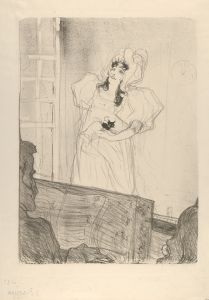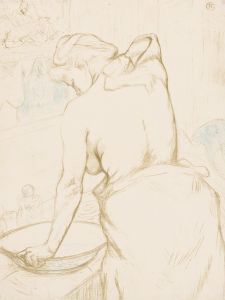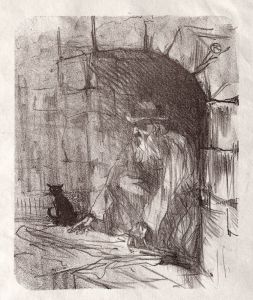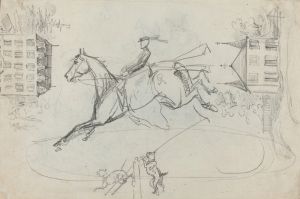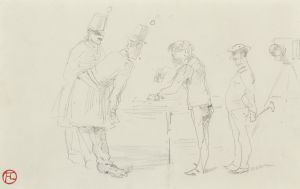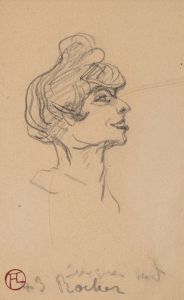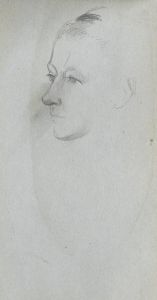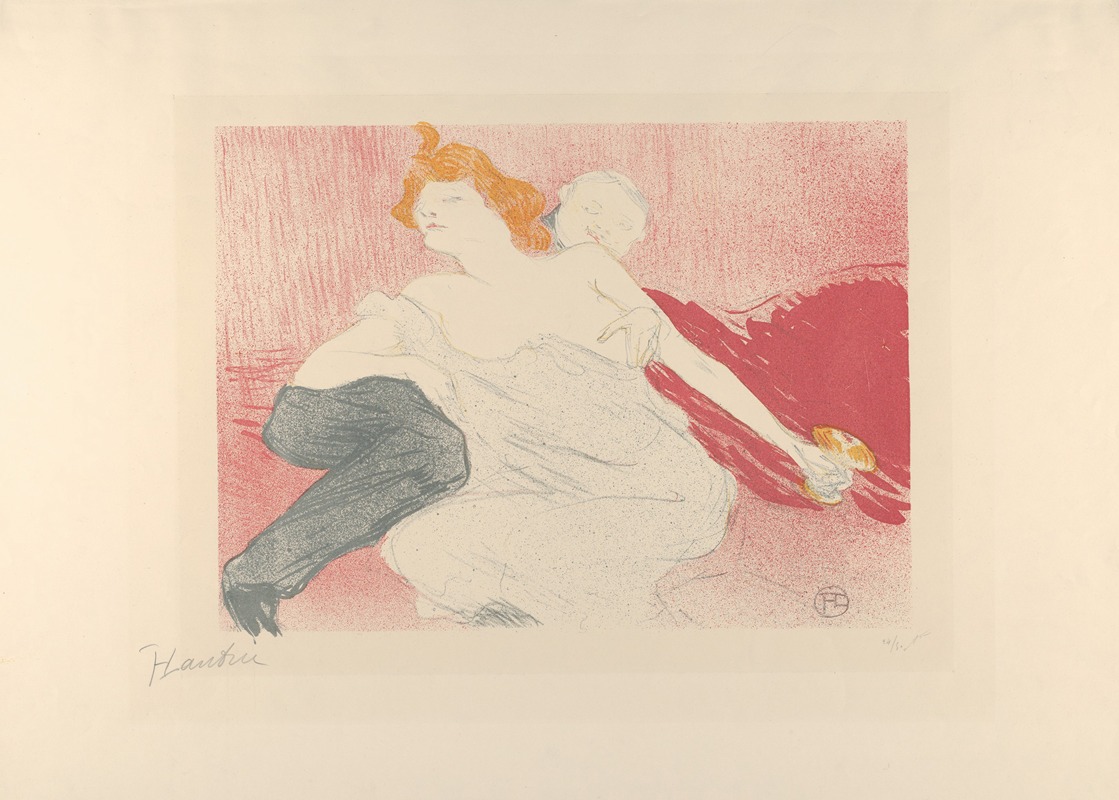
Débauché
A hand-painted replica of Henri de Toulouse-Lautrec’s masterpiece Débauché, meticulously crafted by professional artists to capture the true essence of the original. Each piece is created with museum-quality canvas and rare mineral pigments, carefully painted by experienced artists with delicate brushstrokes and rich, layered colors to perfectly recreate the texture of the original artwork. Unlike machine-printed reproductions, this hand-painted version brings the painting to life, infused with the artist’s emotions and skill in every stroke. Whether for personal collection or home decoration, it instantly elevates the artistic atmosphere of any space.
Henri de Toulouse-Lautrec, a prominent French painter, printmaker, draughtsman, and illustrator, is renowned for his depictions of Parisian nightlife in the late 19th century. One of his notable works is "Débauché," which translates to "Debauched" in English. This painting exemplifies Toulouse-Lautrec's unique style and his ability to capture the essence of the bohemian lifestyle that characterized the Montmartre district of Paris during the Belle Époque.
Henri de Toulouse-Lautrec was born on November 24, 1864, in Albi, France, into an aristocratic family. Despite his noble lineage, he chose to immerse himself in the vibrant and often sordid world of Parisian entertainment. His physical disabilities, resulting from congenital health issues and a series of accidents, led him to focus intensely on his art. Toulouse-Lautrec's work often depicted the lives of dancers, prostitutes, and other denizens of the Parisian underworld, providing a candid and sometimes unflattering view of society.
"Débauché" is a prime example of Toulouse-Lautrec's fascination with the themes of decadence and moral decline. The painting portrays a scene of debauchery, capturing the hedonistic and often self-destructive behavior of its subjects. Toulouse-Lautrec's use of bold lines and vibrant colors brings the scene to life, emphasizing the raw and unfiltered nature of the moment. His keen observation skills and ability to convey emotion through his brushwork make "Débauché" a compelling piece that invites viewers to reflect on the excesses of human behavior.
Toulouse-Lautrec's artistic style was heavily influenced by the Impressionists, particularly Edgar Degas, as well as by Japanese woodblock prints, which were popular in Europe at the time. His work is characterized by its dynamic compositions, innovative use of color, and a focus on capturing movement and expression. "Débauché" reflects these influences, showcasing Toulouse-Lautrec's ability to blend different artistic traditions into a cohesive and distinctive style.
The painting also highlights Toulouse-Lautrec's interest in the human condition, particularly the darker aspects of life. His work often delved into themes of addiction, loneliness, and the fleeting nature of pleasure. "Débauché" is no exception, as it presents a candid and unvarnished look at the consequences of indulgence. Through his art, Toulouse-Lautrec sought to reveal the complexities of human nature, challenging viewers to confront the realities of the world around them.
Henri de Toulouse-Lautrec's contributions to the art world extend beyond his paintings. He was also a prolific printmaker and illustrator, creating iconic posters for the Moulin Rouge and other Parisian cabarets. His work played a significant role in the development of modern graphic design and advertising, influencing generations of artists and designers.
In summary, "Débauché" by Henri de Toulouse-Lautrec is a powerful representation of the artist's ability to capture the essence of Parisian nightlife and the complexities of human behavior. Through his innovative style and keen observations, Toulouse-Lautrec created a body of work that continues to resonate with audiences today, offering a window into the vibrant and often tumultuous world of the Belle Époque.






